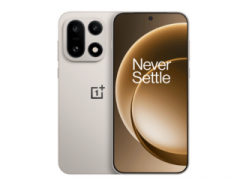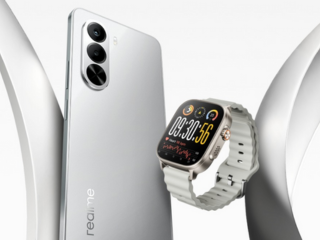- Home
- Telecom
- Telecom Features
- Tech 101: What Is Spectrum, and Why Is It Being Auctioned?
Tech 101: What Is Spectrum, and Why Is It Being Auctioned?

The word spectrum has a very loaded meaning in India, and makes most people first think of the 2G spectrum scam. We keep reading about spectrum auctions and most people probably know it has something to do with their phones, but what is spectrum, exactly?
The word spectrum in this context refers to a range of radio-waves that are used for communication purposes. This includes the FM or AM radio broadcasts that you listen to on the way to work, and even other wireless forms of communication like Bluetooth and Wi-Fi. The smartphone you're using also uses these same radio waves to transmit data, and the difference really lies in the specific frequencies in use, and of course, the technology used to convert those waves into something useful (whether that's the voice on the radio, the SMS you read, or the webpage you load).
The one characteristic you need to understand about spectrum is frequency - that's the number of repetitions of the wave you see in a second. You can easily understand this from the image below - the top-most wave is low-frequency, and so it repeats slowly. In the time that it makes three repetitions, the bottom-most (high-frequency) wave repeats 10 times. The high-frequency wave has obviously traveled a lot further in the same amount of time, but in a straight line, they've both gone as far - so the high frequency wave needs much more energy to travel the same distance. On the other hand, in the space it takes for three pieces of data in the first wave, you can fit 10 in the second, so you can pack more information into high-frequencies, in the same amount of time.
Bands
So spectrum refers to the waves that are there all around us at all times, passing through everything and this means that it needs to be regulated. If any one could broadcast signals at any frequency, there would be total chaos, and it would lead to a lot of interference, effectively rendering the spectrum useless for any kind of meaningful communication. That's why the spectrum gets divided into bands by the government. Think of the spectrum as a whole as the wide open ground, and think of bands as roads that are put up on it to help guide traffic in a regulated fashion.
This is necessary - to stretch the metaphor - because otherwise traffic from one source (say, the home Wi-Fi connection) could get in the way of traffic from your phone, resulting in a crash that stops everything from working.
So the spectrum is divided between different types of technology - your AM and FM channels are all spread around 100MHz - 200MHz. Telecom spectrum starts from 800MHz, and goes up to 2300MHz. Beyond that, we start getting into the unlicensed bands used for technology such as Wi-Fi and Bluetooth - Wi-Fi used to be 2.4GHz (2400MHz) and has started to shift to the 5GHz band.
Commonly used bands for cellular communication are 800MHz, 900MHz, 1800MHz, 2100MHz, and 2300MHz. According to the GSM Alliance, the most suitable spectrum for telecommunication is in the 400MHz to 4GHz range, and these bands are used globally for various telecommunications purposes. As a result, different standards such as GSM, WCDMA, and LTE were developed over time to use these bands; creating an ecosystem of technology that operators can deploy. Each country regulates the use of spectrum in its own territory but (by and large) the same technology finds use around the world, which is how you have roaming services.
Circles
Just as you have different countries managing spectrum in their geographies, you also have different telecom circles. This was a way for the government to manage the spectrum effectively across the country, and as a result, India was divided into 23 circles in 1995; later, in 2007, Chennai was merged with Tamil Nadu leaving 22 circles in all.
When the policy first came about, telecom spectrum was linked to an operator's license - companies would be granted their license and they would also be allocated frequencies for a fixed number of years, after which they would have to bid to renew their license. New norms in 2011 delinked the spectrum from the license, so now when telecom operators ask to renew their licenses, they pay separately for frequencies.
So a telco would have to bid for a spectrum license in all of these circles to offer uninterrupted access across India - otherwise, it would have to connect with another company to offer the services in areas where it lacks spectrum, leading to roaming charges. So for example, according to this spectrum data holding sheet, Airtel holds 900MHz spectrum in Delhi, Mumbai, Andhra Pradesh, and Karnataka but has none in Gujarat and Maharashtra. In those circles, it needs to switch users to a different band to offer its services. Of course this happens without any user intervention, so as long as Airtel has any spectrum (and a license) in the circle, users are unlikely to notice the difference. Vodafone meanwhile has gaps in 900MHz in Andhra Pradesh and Karnataka, while Idea owns spectrum in all these circles, but doesn't have 900MHz spectrum in Mumbai and Kolkata.
In the 1800MHz band (which is being used by Reliance Jio and Vodafone 4G - with Airtel soon to follow suit although it's presently using the 2300MHz spectrum) Reliance Jio, Vodafone, Idea, and Airtel all have spectrum across almost all the circles.
2G, 3G, 4G
All these numbers refer to the generation of the technology being used for communication. The oldest of these is obviously 2G, while 4G is still evolving. These technologies were developed to take advantage of different bands, and this means that you can't just use a technology on any band at will. Bands might be roads, but only specific types of vehicles can travel on them. That's why your phone needs a modem that can operate on multiple frequencies, so that it can connect to all the bands, and transmit your voice, messages, and data.
While 2G services were launched in India ver 900MHz (and later 1800MHz, which is also being used for 4G), 3G services ran on both 900MHz and 2100MHz in India. Initially, LTE required a higher frequency for the greater data speeds it offered, but technology advances made it possible to use 1800MHz instead.
Does the frequency matter?
So there are a lot of different frequency bands auctioned across different circles, and these bands power different technologies. But are there any differences between the bands? Apart from the fact that the communication technology was developed for certain bands, what are the advantages of using - for example, the 1800MHz for 4G over the 2300MHz band?
As explained right at the start, the higher the frequency, the more the energy is required for the wave. This is true for any kind of spectrum, not just the telecom spectrum. So for example, the Wi-Fi network in your house can be either 2.4GHz or 5GHz, and there are pros and cons to both of these. Fewer devices operate on 5GHz, so there is very little interference in your Wi-Fi network at this frequency, but on the other hand, the range for a 2.4GHz network would be better, and it would be less affected by having to pass through walls.
The same holds true for the frequencies in use in telecom. Lower frequencies will use less power, travel further, get less affected by disturbances, and provide better coverage inside buildings. This means you ideally want to operate at the lowest fequency that is able to carry signals necessary for the applications you are running (voice/ data/ anything else). 1800MHz seems to be the sweet spot between coverage and capacity as far as 4G deployment is concerned.
Auction, allocation, and auction again
The last thing you need to know is about the system of auctions. Like other natural resources, spectrum is also supposed to be auctioned by the government to companies that can then use this to offer a number of services and recoup their investments. At least, that was the plan, though in fact, that hasn't always happened.
The first spectrum auction was for the 900MHz band, in 1994. Soon after, MTNL and BSNL entered the picture, and there were auctions in 1997, 2000, and 2001 (the last being for 1800MHz). After this, the government decided to switch to an administrative allocation model, where it would select the companies best suited for developing India's telecom infrastructure. However, the result of this was that spectrum was being licensed at far lower rates than what was raised by auction. In 2008, spectrum in the 1800MHz band was again allocated, and in 2012, the Supreme Court asked the government to cancel most of the licenses citing irregularities.
More in our telecom spectrum auction series
Get your daily dose of tech news, reviews, and insights, in under 80 characters on Gadgets 360 Turbo. Connect with fellow tech lovers on our Forum. Follow us on X, Facebook, WhatsApp, Threads and Google News for instant updates. Catch all the action on our YouTube channel.
Related Stories
- Samsung Galaxy Unpacked 2025
- ChatGPT
- Redmi Note 14 Pro+
- iPhone 16
- Apple Vision Pro
- Oneplus 12
- OnePlus Nord CE 3 Lite 5G
- iPhone 13
- Xiaomi 14 Pro
- Oppo Find N3
- Tecno Spark Go (2023)
- Realme V30
- Best Phones Under 25000
- Samsung Galaxy S24 Series
- Cryptocurrency
- iQoo 12
- Samsung Galaxy S24 Ultra
- Giottus
- Samsung Galaxy Z Flip 5
- Apple 'Scary Fast'
- Housefull 5
- GoPro Hero 12 Black Review
- Invincible Season 2
- JioGlass
- HD Ready TV
- Laptop Under 50000
- Smartwatch Under 10000
- Latest Mobile Phones
- Compare Phones
- Huawei Mate 80 RS Master Edition
- Huawei Mate 80 Pro Max
- Huawei Mate 80 Pro
- Huawei Mate 80
- Huawei Mate X7
- Honor 500
- Honor 500 Pro
- Lava Agni 4
- Asus ProArt P16
- MacBook Pro 14-inch (M5, 2025)
- Huawei MatePad Edge
- iQOO Pad 5e
- Huawei Watch Ultimate 2
- Huawei Watch GT 6 (41mm)
- Acerpure Nitro Z Series 100-inch QLED TV
- Samsung 43 Inch LED Ultra HD (4K) Smart TV (UA43UE81AFULXL)
- Asus ROG Ally
- Nintendo Switch Lite
- Haier 1.6 Ton 5 Star Inverter Split AC (HSU19G-MZAID5BN-INV)
- Haier 1.6 Ton 5 Star Inverter Split AC (HSU19G-MZAIM5BN-INV)

















